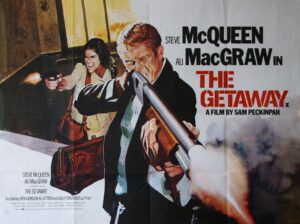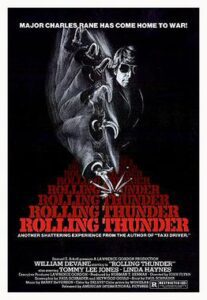By Neil Fauerso
San Antonio occupies an unusual cultural position. Technically the seventh largest city in the U.S. (due to its Lichtenstein-sized city limits), it nevertheless is usually associated with provincial mid-tiered cities derided for their prosaic bleakness—Kansas City, Cleveland, Buffalo, Sacramento, et al. When San Antonio’s NBA team, the Spurs, were routine title contenders, TNT’s Charles Barkley would relish roasting the city in his chortling southern drawl (“there’s some biiig people in San Antonio….”). I recently saw a stand-up comedian from New York and braced for the usual invective—that this is a fat, poor, ugly city and why on earth would anyone want to live here?
However, San Antonio also exists as a frontier totem of mythic shadow. Mark Twain once said: “There are only four unique cities in the United States: New Orleans, San Antonio, Boston, and San Francisco.” I’ve always interpreted that to mean that those cities had a unique geographical character, but more importantly, a personality that was intrinsically American, differentiating themselves from capitals of industry and commerce like New York and Chicago which were closer to iterations of European cities. With San Antonio, that personality is perhaps the primary, legendary gateway to the west, sanctified by a tale of martyred frontiers—the Alamo.
Though the battle at the small mission was actually a foolishly doomed stand in defense of preserving slavery, its symbol, until recently, was like one of those American hieroglyphs—James Dean’s popped collar, Marilyn Monroe’s billowing dress—that beguile the globe. This was especially pronounced for the boomer generation whose adolescence was spent in the thrall of the candy-glazed sound stage of Disney’s manifest destiny westerns. Phil Collins, born in England in 1951, was so taken (or perhaps haunted) by the Alamo story that he later came to believe he was a reincarnation of the last man to leave the Alamo. Subsequently, he spent tens of millions of dollars acquiring (possibly fake) relics from the Alamo, to be donated to a planned right-wing hagiography museum lusted after by Texas’ Dockers-wearing, suburban, reactionary, state government officials.
The current configuration of the Alamo, an underwhelming mission church (the missions along the San Antonio River are far more beautiful), is surrounded by tourist dross—wax museums, taffy, t-shirts and keychain shops. It seems to exist in a strange simulacra of a film set (or let’s be honest, a tv set for something along the line of Walker, Texas Ranger) or a place where a wanted fugitive is apprehended in a candid camera-like sting. To be frank, it sucks. You take friends there for the joke that it sucks. This is an essential quality of San Antonio. Twenty or so years ago, stickers proclaiming “Keep Austin Weird” (an effort that was wholly unsuccessful unless the current sci-fi dystopia of tent cities and million-dollar condos is “weird”) became popular and the joking reply from San Antonio were stickers that read “Keep San Antonio Lame”.
This lameness forms the piquant essence of San Antonio’s aesthetic character. It is a lameness with legacy, real history. A lameness with an edge, an élan. In the sprawling boulevards of auto shops, taquerias and strip malls with their Mad Libs assortment of businesses (Supplements, Martial Arts Studio, a store called “Grim Dark Games” that has a topographical board to play Warhammer 40k, the largely inscrutable game involving futuristic dwarf figurines), I see the living, urban, abstract art of the graffiti and paint jobs that Dennis Hopper catalogued with his polaroid series of LA graffiti, and its erasure by city crews. This experience reminded Hopper “that art is everywhere in every corner that you choose to frame and not just ignore and walk by.”

San Antonio made me appreciate this perspective more so than anywhere else I’ve lived. Residing in a relatively serene city—the traffic’s not too bad, neither are the rents—allows a certain settling of the senses and the acuity that follows. The music critic Kyle Gann once recounted leaving a John Cage concert irritated and dissatisfied by what he initially judged as an assortment of banal squawks from everyday objects, and then walked onto the street and heard a symphony. The Cage composition was like a procedure to remove cotton stuffing from one’s ears. In trying to see and listen to this city, I feel a similar expansive frisson, the sound of a cork being pulled out of a bottle of champagne. And it is in this state that the lameness of the city reveals itself more as a strangeness.
This city, with a reputation for being ‘sweet’ and a ’great place to raise kids’ is also deeply gothic in the most recent cultural sense—in love with dark metal, The Smiths, Halloween, haunted spots around town, Dia de los Muertos and oferendas. The city that produced Christopher Cross and his glass blown fantasy of middle-class luxury escape ‘Sailing’ also oozed out the Butthole Surfer’s deranged rumination of the same ‘Sea Ferring’. This is not contrast so much as a wholeness—as if constellations in the night sky were pin pricks in the curved ceiling of a dome.
My two favorite movies filmed in San Antonio—1972’s The Getaway and 1977’s Rolling Thunder—embody this sea-sawing totality. In both films, the protagonists return to San Antonio after stints in prison and a Vietnamese POW camp respectively, and squint dazed in the unvarnished sunlight of the flats. The bucolic scenes—a river cruise, the endless congregations of afternoon shadows in an unspooling ranch home—are tinged with an approaching chime, the blast of a mariachi trumpet. When things break bad there’s something cheerful or at least festive about these films’ turns—as if the ‘set’ of San Antonio got the party it was prepared and decorated for.

An artistic aesthetic of a place is usually more correctly thought of as a state of mind. The aesthetic of say, late 1960s and early 1970s Los Angeles, of John Baldessari and David Hockney, froze the frame of Antonioni-existentialism and lacquered it with a wry shrug, toss, and splash. Harry Dean Stanton saying “I am nothing, you are nothing” in a mysteriously reassuring tone.
Let’s take the art of a few interesting contemporary San Antonio artists: Jennifer Ling Datchuk, Jimmy James Canales, Chris Sauter, Cruz Ortiz, Carmen Cartiness Johnson, James Smolleck, and Jenelle Esparza. There isn’t a visual current among them, but rather one of relaxed stoicism. This is the beat between lameness and strangeness, the pause in heat when a cloud passes over the sun, the time it takes to speak of a past misfortune and laugh.
Philip Larkin ends his poem “Aubade”—which despairingly ruminates on the static, white noise inevitability of death— with the line: “Postmen, like doctors, go from house to house.” Larkin lived in similarly provincial Yorkshire, England, and took such psychic purgatory with an old-world European melancholy. Eric Homberger describes him as “the saddest heart in the post-war supermarket”. Here, we’re a little bit more sanguine about all this sprawl and would not cast such a pall on an approaching visitor. They might be a friend, holding a brightly dyed egg filled with confetti, ready to cheerfully break it on your head.
Neil Fauerso is a writer, teacher, and lawyer. He is one of the co-founders of the modern classical record label, Unseen Worlds, and often organizes concerts and other events.

Thank you Neil! I loved it. Hope you and Josey and the family are all safe and happy!
Very well said, Neil! We enjoyed reading your article… so very well written and interesting, as well… thank you! And furthermore… you are an attorney, which Phil was especially interested to read about you! Neither of us had any idea that you had gone to Law School. You are quite an interesting fellow, on many levels, it seems! Thanks for your great article!